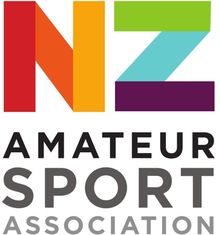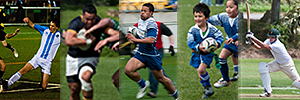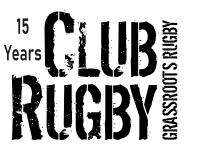1919 – the year the rugby roared. Part 2: the club rugby season

The Senior Championship club rugby competition 100 years ago was every bit as thrilling as it is today.
Crowds of up to several thousand regularly watched club matches at Athletic Park and further afield at venues such as Duppa St Park (now the site of a WCC plant nursery and a bowling club) and the Petone Rec and there were several star players to follow such as Poneke captain Beet Algar, Athletic and Wellington representative captain Edward ‘Teddy’ Roberts and Petone’s Matt Corner.
Like today, there were several prominent brothers playing in the competition, such as the Ryan brothers at Petone (all seven of them, including All Blacks James and Eddie), the Nicholls brothers of Petone (Harry ‘Ginger’, Haro

1919 Senior Championship winners Poneke. An account of the season is below.
ld ‘Doc’ and Mark), the Shearer brothers of Selwyn (All Blacks Syd and Jack, also later to play for Poneke) and the Tilyard brothers of Poneke (All Blacks Jimmy and Fred and Charles).
World War One lasted from September 1914 to November 1918 and took a huge toll on the fabric of New Zealand society
By 1919 there was light at the end of the tunnel. The young players that had kept the game alive during the latter and difficult years of the war began to flourish. Other prominent pre-war players returned and immediately re-joined their old clubs.
Two clubs that had gone into recess during the war, Johnsonville and Porirua (a forerunner to today’s Northern United) effectively started again, while new clubs such as Marist Brothers Old Boys were formed. The Marist club started in 1919 in the lower grades but would rise to Senior A status and win or share the Jubilee Cup five times from the late 1940s to the early 1960s and later join St Pat’s Old Boys to form today’s Marist St Pat’s.
These three clubs above, and others such as Hutt and Upper Hutt still in existence today also played in the lower grades.
Another consequence of the war was the end of the ‘Wednesday Championship’ and the disappearance of many smaller clubs. The Wednesday Championship had been running since 1896, but the outbreak of the war and the introduction of ‘half-holiday’ labour laws on Saturdays combined to spell the end of this once hotly contested grade. Petone won the first Wednesday Championship, but other clubs to win included ‘Tradesmen’, ‘Permanent Artillery’ and ‘Tramway.’
Eight senior teams lined up for the start of the 1919 Wellington Senior Club Championship at the end of April. This soon became a seven-team competition with Wellington College Old Boys forced to withdraw early.

The other seven teams were: Athletic, Oriental, Petone, Poneke, Selwyn, University and Wellington.
Of these teams, defending champions Poneke and pre-war powerhouse Athletic were expected to be favourites with Petone also strong and University, Selwyn and Oriental always dangerous.
The Wellington club, who were bracketed with Athletic as winners of the 1914 competition when war broke out, were in rebuilding mode. Not one of their pre-war first XV returned and they were rocked early in the year by the deaths of two club leading administrators Danie Weir and P.R. Galvin, both to the influenza epidemic. Weir’s loss was felt hard as he had been instrumental in keeping the club running throughout the war. Wellington would win just two of 15 games in this 1919 season.
The season started with Poneke and Athletic both enjoying good wins. C. Morris scored five tries for Poneke in their 51-0 win over Oriental (a big score with tries worth 3 points). Athletic defeated University 21-3.
In Round Two, Athletic overcame Selwyn 10-5 and Poneke beat University 23-5, setting up an early season clash between Poneke and Athletic.
The following week both Athletic and Poneke were understrength through illness and injury and fought out a 0-0 draw.

Poneke v Athletic preview EP 16/5/1919
Remarkably, this was to the first of four draws for Poneke throughout the 1919 season and they were still able to come through to win the title.
The second of these draws came three weeks later against Petone (6-6), the same weekend that Athletic beat Oriental 28-0.
The very next week Poneke drew again, this time with Selwyn (0-0). After the first full round of seven games, Athletic and Poneke were equal on 11 points, with Petone third on 9 and University on 7.
On the last Saturday of June, Athletic and Poneke met for the second time in front of 7,000 at Athletic Park. Poneke led 14-0 at halftime but Athletic came back to win 20-17. Athletic fullback Griffin was on fire with his goal-kicking. The game ended in “near-darkness.”
Leaders Athletic then got the mid-season wobbles, lucky to beat Selwyn 8-6 and then losing 3-5 to Petone on the same Saturday as Poneke were handed 2 competition points by Wellington who defaulted “owing to the Wellington team not being able to turn out at full strength.”
Moving into mid-July, Poneke’s fourth draw of the year was with University, coming back to draw level 9-9 (the final score) with 15 minutes to play. Athletic were able to dispatch Wellington 62-6 and then University 27-8 and by the end of the month were leaders with nine wins, a draw and a loss from 11 matches.
The following week, Petone made a statement by beating Poneke 22-3 – leapfrogging Petone ahead of Poneke into second and 3 points adrift of leaders Athletic.
Then came the defining weekend of the 1919 season on 16 August when Poneke toppled Athletic 14-3 in front of a huge crowd. At the same time at Petone the home side lost to Selwyn 9-12 and the race for the title closed up.
It got even more exciting the next week when Poneke beat Selwyn 12-3, while simultaneously Athletic lost to Petone 5-8. Poneke were now in the lead with one round to play.
But the last round wasn’t to be played until 27 September as the leading players came together to play the representative season and defend the Ranfurly Shield (see the next article of this series).
When club rugby resumed for its final round, Poneke meant business when forward Troy scored after only a couple of minutes against Petone. Umberto Calcinai, Beet Algar and Joe McArthur (all Wellington rep players) combined for another decisive early try, while McArthur scored again to put Poneke ahead 19-3. This was enough and Poneke went on to win 32-8. Elsewhere, Athletic beat Selwyn 25-17 and the final order of standings was Poneke champions, Athletic second and Petone third.
Poneke, Athletic and Petone would go on to dominate Wellington club rugby over the next several seasons as the established players continued to dominate and younger players made their marks.
Petone won in 1920, Poneke in 1921, followed by Petone again in 1921, 1922, 1923 and 1924 with All Blacks five-eighth Mark Nicholls driving their ship. The 1922 ‘final’ at Athletic Park between Petone and Poneke drew an all-time Wellington club rugby record 16,000 spectators.
Poneke won again in 1925 and Cliff Porter’s Athletic won in 1926. Finally in 1927 the shackles were broken and Wellington College Old Boys captured their one and only title in 1927 and University won in 1928 and again in 1929, the first year of the Jubilee Cup.
Some 22 new clubs joined the WRFU’s Senior competitions in 1919-1939 period between the wars, though only one – Eastbourne – still survives as a standalone club.
Steven White, 19 Mar 2019
Adam Julian, 19 Mar 2019
Steven White, 12 Mar 2019
Adam Julian, 04 Mar 2019
Steven White, 12 Feb 2019








.jpg)





